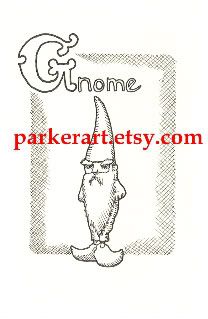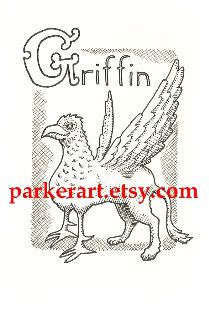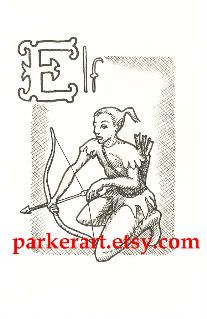Harvey Parker
My shop: (Come see a new monster every day!)
Parkerart.etsy.com
My blog: (Find out more about me.)
http://parkerartblogspot.blogspot.com/
Read my Tweets at:
http://twitter.com/ParkerArt
Artist's Bio:
*over 43 years of drawing experience
*Certified Gifted and Talented Instructor
*Master of Arts in Education
*Bachelor of Fine Arts, with an emphasis in Sculpture
*Certified Art Education Specialist
*Studied Art History of the Italian Renaissance in Florence
Venice
Milan
Sienna
Rome and the Vatican
*Travel includesTuscany
Zagreb and Sarajevo, (former Yugoslavia)
London
New York City
Southwestern US
Tijuana, Mexico
Southeastern US (except the Carolinas)
Pennsylvania Amish country, as well asPittsburgh and Philadelphia
Oklahoma City
Annapolis, Maryland
Washington D.C.
1964
Born in Paris, Tennessee, USA
1965
Began drawing.
1967-'73
Navy Brat, oldest of five, San Diego, California, USA
1974
Down on the Farm, West Tennessee, no lights, no phone, no mail. We grew our own food, dug our own well, bathed in a galvanized tub when the creek was too cold.
1975
We finally got Electricity! Caught pneumonia.
1976-82
Farmboy, raised goats, chickens, pigs, ducks, geese, guineas, cats, dogs, rabbits...
1982
High school graduate! Also became oldest of six (my mother's first mid-life crisis).
1983
Farmboy (still). Caught small bush-hog on fire. Broke hydraulics on largerbush-hog. Stuck large tractor in the mud. Stuck larger tractor trying to pull large tractor out of mud. (All in one day.)Sent to college. (Cheaper than Farm Equipment.)
1983-1988
Organization of Murray Art Students (OMAS), Murray, KentuckyActive OMAS Member
1984
Art Major FreshmanAll my clothes are black.
1985
Olive Street Studio Member, Murray, KentuckyShared studio space with fellow students while living in the sculpture garden shack.Organization of Murray Art Students (OMAS)Vice President, Chaired annual student show committeeMurray State University, Murray, Kentucky
1986
Summer Study in Europe.
Fall
College Senior, Take One.Move back into dorm.
1987
Spring
College Senior, Take Two.Married Pamela Leigh Blincoe Johnson.
August
Super Saturdays InstructorMurray State University, Murray, KentuckySculpture Instructor for children’s weekend art program.
1988
College Senior, Take Three.Radiology Transporter at Murray Calloway County Hospital, Murray, KY. Moonlight in food service.
1991
College Graduate! Continued to moonlight in food service.
1993-96
Promotion!Radiology Office Supervisor at Murray-Calloway County Hospital Murray, KY.Quit food service.
1996 to Present
Art Instructor at the Mayfield-Graves County Art Guild, Mayfield, KY. Conducting drawing and sculpting workshops for children and adults.
1996-98
Sculptor/Designer at The Berripatch, Inc., Paris, TN. Duties included creation of original sculptures, line art, logo design, and mold-making.
1998-99
Art Instructor at New Madrid County Central High School in New Madrid, MO.
1999 to 2007
Art/Humanities Teacher at Fulton County in Hickman, KY.Active Fulton County Education Association (FCEA) Member, 2005-07 FCEA President
2001
My wife bought a Queen Anne Victorian house in the historic section of Mayfield, Kentucky that was built in 1888.
2003
Juror, Youthful Impressions ShowMayfield Graves County Art Guild in Mayfield, Kentucky
2005
July- Began repainting the exterior of our Victorian home: sky blue for the porch ceiling; antique white, antique green, two shades of purple, and a warm yellow for the posts and trim.
August- Earned Master of Arts in Education from Murray State University, Murray, Kentucky
Oct. 15- Survived a heart attack. Had one cardiac stent.
Dec. 5- Five more stents.
2006
Jan. 3- Returned to teaching.
Tuesday, March 31, 2009
Saturday, March 28, 2009
Ready to draw!!
I'm getting ready to leave for Lexington KY to draw caricatures at a luau. I'm loaning my flashiest Hawiian shirt to my little brother (who is bigger than me). He is driving us up there. Wouldn't you know, it's supposed to rain all day..
Friday, March 27, 2009
Faun ACEO by parkerart

The Fauns, are associated with Satyrs, but are known to be more gentle. They are mischievous creatures with the legs, ears and tail of a goat and the face and body of a handsome young man.
When they follow the god Faunus they can cause nightmares. When they follow the god Silenus, they are usually too drunk to cause anything but chaos and panic. Pan, the god of panic, was a faun. At times, they can be quite cheerful. Proficient on the Pan-flute, they are generous hosts.
Fauns prefer to consort with nymphs, but have occasionally chased farm girls and milk maids.
Thursday, March 26, 2009
Salamander by parkerart

ACEO Mythological Beastie 39 Salamander
An ACEO (Artist Trading Card (ATC), Edition Open), from a series I've drawn about mythological creatures.
The salamander (the name possibly coming from the Greek salambe meaning 'fireplace') was often visualized as a small dragon or lizard and is a fire elemental. According to Aristotle and Pliny, the salamander not only resisted fire, but could extinguish it and would charge any flame that it saw as if it were an enemy. Some thought that the reason the salamander was able to withstand and extinguish fire, was that it was incredibly cold, and it would put out fire on contact. The salamander was also considered to be very poisonous, so much so, that a person would die from eating the fruit form a tree around which a salamander had entwined itself.
Note:I have designed a mythological beastie card for every letter of the alphabet (for some letters I’ve been able to draw more than one). If you are interested in seeing any other beasts not yet listed please convo me.
Also note the watermark “parkerart.etsy.com” will not appear on your card.
The salamander (the name possibly coming from the Greek salambe meaning 'fireplace') was often visualized as a small dragon or lizard and is a fire elemental. According to Aristotle and Pliny, the salamander not only resisted fire, but could extinguish it and would charge any flame that it saw as if it were an enemy. Some thought that the reason the salamander was able to withstand and extinguish fire, was that it was incredibly cold, and it would put out fire on contact. The salamander was also considered to be very poisonous, so much so, that a person would die from eating the fruit form a tree around which a salamander had entwined itself.
Note:I have designed a mythological beastie card for every letter of the alphabet (for some letters I’ve been able to draw more than one). If you are interested in seeing any other beasts not yet listed please convo me.
Also note the watermark “parkerart.etsy.com” will not appear on your card.
Wednesday, March 25, 2009
Mandrake by parkerart
 The mandrake, Mandragora officinarum, is a plant called by the Arabs luffâh, or beid el-jinn ("djinn's eggs"). The parsley-shaped root is often branched. Its’ leaves, 6 to 16 inches long, somewhat resemble those of the tobacco-plant. It grows a number of one-flowered nodding peduncles, bearing whitish-green flowers, nearly 2 inches broad, which produce globular, succulent, orange to red berries, resembling small tomatoes, which ripen in late spring. All parts of the mandrake plant are poisonous. The plant grows natively in southern and central Europe and in lands around the Mediterranean Sea, as well as on Corsica.
The mandrake, Mandragora officinarum, is a plant called by the Arabs luffâh, or beid el-jinn ("djinn's eggs"). The parsley-shaped root is often branched. Its’ leaves, 6 to 16 inches long, somewhat resemble those of the tobacco-plant. It grows a number of one-flowered nodding peduncles, bearing whitish-green flowers, nearly 2 inches broad, which produce globular, succulent, orange to red berries, resembling small tomatoes, which ripen in late spring. All parts of the mandrake plant are poisonous. The plant grows natively in southern and central Europe and in lands around the Mediterranean Sea, as well as on Corsica.According to legend, when the root is dug up it screams and kills all who hear it. Literature includes complex directions for harvesting a mandrake root in relative safety. For example Josephus (c. 37 AD Jerusalem – c. 100) gives the following directions for pulling it up:A furrow must be dug around the root until its lower part is exposed, then a dog is tied to it, after which the person tying the dog must get away. The dog then endeavours to follow him, and so easily pulls up the root, but dies suddenly instead of his master. After this the root can be handled without fear.
Tuesday, March 24, 2009
My most popular item on Etsy
 This is the most popular item in my Etsy store. I think it's because POE also stands for 'photographers on etsy' (which I'm not). But I think that kinda funny... You can up the viewing numbers by going to
This is the most popular item in my Etsy store. I think it's because POE also stands for 'photographers on etsy' (which I'm not). But I think that kinda funny... You can up the viewing numbers by going toparkerart.etsy.com
& searching for poe.
Monday, March 23, 2009
Basilisk by parkerart
 The mythical king of the serpents. The basilisk, or cockatrice, is a creature that is born from a spherical, yolkless egg, laid during the days of Sirius (the Dog Star) by a seven-year-old rooster and hatched by a toad. The basilisk could have originated from the horned adder or hooded cobra from India. Pliny the Elder described it simply as a snake with a golden crown. By the Middle Ages, it had become a snake with the head of a cock, and sometimes with the head a human. In art, the basilisk symbolized the devil and the antichrist.
The mythical king of the serpents. The basilisk, or cockatrice, is a creature that is born from a spherical, yolkless egg, laid during the days of Sirius (the Dog Star) by a seven-year-old rooster and hatched by a toad. The basilisk could have originated from the horned adder or hooded cobra from India. Pliny the Elder described it simply as a snake with a golden crown. By the Middle Ages, it had become a snake with the head of a cock, and sometimes with the head a human. In art, the basilisk symbolized the devil and the antichrist.According to legend, there are two species of the creature. The first kind burns everything it approaches, and the second kind can kill every living thing with a mere glance. Both species are so dreadful that their breath wilts vegetation and shatters stones. It was even believed that if a man on horseback should try to kill it with a spear, the power of the poison conducted through the weapon would not only kill the rider, but the horse as well. The only way to kill a basilisk is by holding a mirror in front of its eyes, while avoiding to look directly at it. The moment the creature sees its own reflection, it will die of fright. However, even the basilisk has natural enemies. The weasel is immune to its glance and if it gets bitten it withdraws from the fight to eat some rue, the only plant that does not wither, and returns with renewed strength. A more dangerous enemy is the cock for should the basilisk hear it crow, it would die instantly.
The carcass of a basilisk was often hung in houses to keep spiders away. It was also used in the temples of Apollo and Diana, where no swallow ever dared to enter.
Sunday, March 22, 2009
ATCs, ACEOs and Art

I make Artist Trading Cards (ATCs) & ACEOs. They are the size of regular playing cards. Sombody in a Scandinavian country started them a few years back.They can be made of any material with any media, but they MUST be 2.5 x 3.5 inches. Many ATCs are traded for free. I haven't had time to trade any, but I would be willing to try it. I have sold some on-line at etsy.com.Sometimes I pick up old poker decks at yard sales or flea markets. I cover them with a few layers of gesso, then I draw on them with ink. Sometimes I scratch the ink off to let the card colors show through.Most ATCs are one of a kind cards or limited editions. Cards printed in open editions are called ACEOs (Artists Card Open Edition). I know part of that is backwards, but what are you gonna do?... That's just the way it is.If you want to know more about ATCs, ACEOs, or art in general, just holler.
Saturday, March 21, 2009
Wednesday, March 18, 2009
Gnome by parkerart

A gnome is a mythical creature characterized by its extremely small size and subterranean lifestyle. Due it’s scarcity and secretive habits, little is known about them. Some claim that they can disappear at will.Most are found in forested areas or along abandoned fencerows, but a few make homesteads at the ends of neglected gardens. Badgers, stouts, skunks, and serpents are their mortal enemies. Some gnomes have the ability to speak with birds, insects, fairies, and pixies. While they enjoy relationships with winged creatures, they specifically avoid humans, trolls, and ogres. Compatible with elves, gnomes are most comfortable with dwarves.
Monday, March 16, 2009
Amphisbaena by parkerart
 The amphisbaena is a two-headed lizard or serpent. It has one head in the normal position, and another at the end of its tail. It can therefore run in either direction. Its eyes shine like lamps, and has no fear of cold.The name "amphibaena" is now given to a legless lizard that can move either forward or backward, though this is a relatively modern use of the name.
The amphisbaena is a two-headed lizard or serpent. It has one head in the normal position, and another at the end of its tail. It can therefore run in either direction. Its eyes shine like lamps, and has no fear of cold.The name "amphibaena" is now given to a legless lizard that can move either forward or backward, though this is a relatively modern use of the name.Historical References:
Lucan [1st century CE] (Pharsalia, book 9, verse 843-844):
"Dread Amphisbaena with his double head / Tapering...".
Pliny the Elder [1st century CE] (Natural History, Book 8, 35):
The amphisbaena has a twin head, that is one at the tail-end as well, as though it were not enough for poison to be poured out of one mouth.
Isidore of Seville [7th century CE] (Etymologies, Book 12, 4:20):
The amphisbaena has two heads, one in the proper place and one in its tail. It can move in the direction of eaither head with a circular motion. Its eyes shine like lamps. Alone among snakes, the amphisbaena goes out in the cold.
Sunday, March 15, 2009
 THE GRIFFIN, OR GRYPHON
THE GRIFFIN, OR GRYPHONThe Griffin is a monster with the body of a lion, the head and wings of an eagle, and back covered with feathers. Like birds it builds its nest, and instead of an egg lays an agate therein. It has long claws and talons of such a size that they are made into drinking-cups. India is assigned as the native country of the Griffins. The Griffins found gold in the mountains and built their nests of it, for which reason their nests were very tempting to the hunters, and they were forced to keep vigilant guard over them. Their instinct led them to know where buried treasures lay, and they did their best to keep plunderers at a distance. The Arimaspians were a one-eyed people of Scythia, famed for plundering the Griffin’s gold.
Milton borrows a simile from the Griffins, Paradise Lost, BookII.:
"As when a Gryphon through the wilderness,
With winged course, o'er hill and moory dale,
Pursues the Arimaspian who by stealth
Hath from his wakeful custody purloined
His guarded gold."
Saturday, March 14, 2009
Elf by parkerart

An ACEO (Artist Trading Card (ATC), Edition Open), from a series I've drawn about mythological creatures.
The elf is a creature of Germanic mythology. The elves were originally thought of as a race of minor nature and fertility gods, who are often pictured as youthful-seeming men and women of great beauty living in forests and underground places and caves, or in wells and springs. They have been portrayed to be long-lived or immortal and as beings of magical powers.
Following J. R. R. Tolkien's influential The Lord of the Rings, wherein a wise, immortal people named Elves have a significant role, elves became staple characters of modern fantasy. This card is designed to immulate Tolkien’s Elves.
Note:I have designed a mythological beastie card for every letter of the alphabet (for some letters I’ve been able to draw more than one). If you are interested in seeing any beasts visit www.parkerart.etsy.com
Friday, March 13, 2009
Acromantulas

Acromantulas have eight eyes, are highly intelligent and capable of human speech. They are typically covered in thick black hair, with a legspan that can reach up to fifteen feet. They possess a set of giant fangs which they use to eat live prey of mammals or their own dead kin.
To see more visit www.parkerart.etsy.com
Subscribe to:
Posts (Atom)






